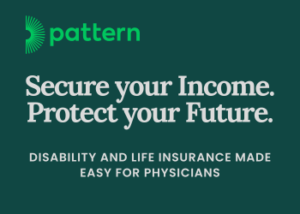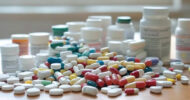As the health care debate drags on, prescription drug costs continue to rise by almost 10 percent annually. It is the rare patient who is spared this expense.
Over the years, I have seen how these costs have affected my patients. At first, most patients had little in the way of co-pays. However, once the local economy deteriorated, co-pays skyrocketed as employers tried to curb their health care expenses. Now, large co-pays are the norm for health insurance plans across the nation.
The solution to this problem appeared simple. Drugs with expired patents are usually much cheaper for patients. Insurance companies encouraged physicians to prescribe these generics and used this practice as a metric to measure quality. That strategy has indeed worked. Generic drugs now account for 89 percent of all prescriptions but only 26 percent of all drug expenditures.
Unfortunately, this success has not prevented drug inflation. Countless new drugs have emerged over the last thirty years. Some have been blockbusters that substantially change medical practice, but the rest have had much less impact. All of these new drugs, blockbusters or not, are protected by patents and promoted by aggressive marketing. They command high prices and subsequently drive up the average cost of prescribed drugs.
Recently, several events have given me a deeper appreciation of the reality experienced by our patients.
The first surprise was witnessing a 400 percent increase in the cost of the albuterol inhaler, an asthma product that has been around for decades. Because the inhaler propellant was changed, the manufacturer sold this product as a newly patented delivery system. This patent loophole is a common tactic in the drug industry. In this case, the FDA predicted that the loophole would cost consumers $8 billion before the patent expired in 2017.
The second revelation was a variation of the same theme. One of my patients watched the market price of a skin medication double in just four years. The reason was that the company’s drug patent was about to expire. The final price tag for the drug was $300 — for a six-week supply. This is another common industry tactic.
But the most surprising outcome has been the emergence of competitive generic drugs. Most generics have a low price point. However, if a large generic manufacturer has little competition, it can act like a monopoly and raise prices on its own terms.
A well-publicized example was the dramatic rise in the price of the EpiPen. This preloaded injector of epinephrine can be life-saving during severe allergic attacks. In 2007, one injection cost $50. By 2016 the price was $300 — for the same drug and injector. This tactic, termed price gouging, is now illegal in the state of Maryland. Other states may soon follow.
These pricing maneuvers have made drug prescribing more complicated for both patients and their physicians. Generics may no longer be safe bets for low costs. New and more expensive drugs may not be any better than generics. And drugs may have different co-pays, depending on the insurance plan.
How is one to know? The answer is simple: the patient and the doctor need to communicate.
I learned that lesson with my own new prescription. My doctor explained carefully why she preferred this brand-name product. When I picked up the prescription, the price tag was $420 for a 75-day supply!
When I mentioned this cost to my physician, she was even more astounded than me. She quickly changed the prescription to a generic product that cost $29 for the same duration of treatment. She felt the advantage of the first medication was minor compared to its overwhelming cost, which was 14 times more expensive.
Pharmacists have told me that this sticker shock is becoming more common among patients picking up their meds. But that situation is preventable. Doctors should know the prices and efficacy of the drugs they commonly prescribe, and patients should ask for the drug prices up front. In my case, both my physician and I should have done that homework. Thankfully, all that was needed to solve the problem was a painless follow-up discussion.
Drug price information is easy to find online since pharmacies compete fiercely for business. The market price for most drugs is available via a simple Google search of the specific drug name with the term “price.”
If the drug is expensive (e.g., three digits for a typical 30-day prescription), the out-of-pocket cost (copay or deductible) is likely to be significant. If the local pharmacist has the patient’s insurance information, they can quickly quote how much the patient must pay. If the out-of-pocket cost is high, a less expensive yet effective drug may be preferable. If the patient cannot afford the drug, there are organizations such as NeedyMeds that can help with discounts.
Health care economics may be complicated, but drug cost is where patients and their doctors can team up. Patients want to be healthy but don’t want to go broke in the process. Doctors are in the best position to advise patients of the trade-offs between cost and benefit. Working together, doctor and patient can make an informed choice.
There is a lot of room for improvement. In a recent poll, 60 percent of patients feel their doctor is unaware of how much they pay for drugs. Doctors need to know more about drug costs and help patients deal with this challenge.
If you are looking for a perfect model of patient-centered care, this is it. After all, as my own story illustrates, when doctors become patients, we face the same challenges as everyone else.
Mark Kelley is a pulmonologist and founder, HealthWeb Navigator, where this article originally appeared.
Image credit: Shutterstock.com






























![Breaking the cycle of sacrifice: from medical martyrdom to purposeful healing [PODCAST]](https://kevinmd.com/wp-content/uploads/Design-2-190x100.jpg)
